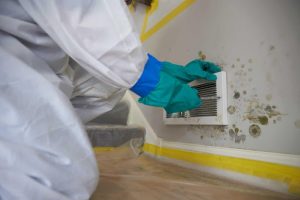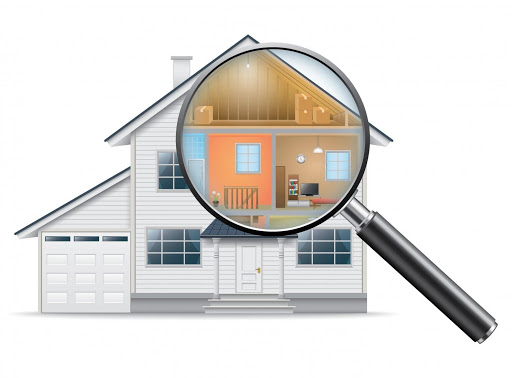Are you suspecting mold presence in your house? Numerous signs indicate fungal growth in homes, but most of them are too subtle to be noticed by homeowners. Therefore, the largest part of residents takes action when the problem has already spread across the entire house. Since mildew thrives on moisture, it’s likely to appear in homes with high humidity levels, leaks, and water damage. The development of certain health symptoms is also an indicator of fungal growth in residences, along with the spread of a musty odor. Nowadays, there are various mold removal companies, such as , providing mold inspection, remediation, and water damage restoration services. These are the main signs you need a Mold Inspection.
Table of Contents
Water damage
Water damage is undeniably a sign you require a mold inspection. It can trigger the growth of this fungus in as soon as twenty-four hours. Nevertheless, homeowners often fail to detect the presence of spores due to their microscopic size of between two and ten microns. Even if spores are not still visible, it doesn’t mean you should refrain from hiring a professional inspector to look for signs of damage.
Locating the source of moisture is invaluable when coping with water damage. For instance, finding a puddle on the floor in your kitchen is a standard indicator of a piping problem. In contrast, water stains on the ceiling usually originate from a roofing issue. In the event of a flood, the water source is more than obvious, thus requiring quick action.
Leaks
Leaks are another unmistakable sign you need a mold inspection. Every homeowner has at least once experienced a leaky faucet in his/her household without considering it to be a severe household issue. Anyhow, dripping taps are not just frustrating but capable of causing severe household damage. Leaving such issues unattended for an extended period might result in mold growth.
For example, this fungus will start growing near the leak source and later find its way into the HVAC system. By entering the air conditioning system, it gains access to the entire house and affects the most hidden corners. Besides dripping taps, homeowners should be on the lookout for leaking water pipes, water heaters, garbage disposal units, sink pipes, showers, and toilets. Click here to see a few handy tips for tracing a water leak in the plumbing.

Musty smell
The odor in your house speaks volumes about the presence of mold. If you sense a musty smell whenever you enter the house or a particular room, it means you need to have your home inspected for fungal growth. Nevertheless, mildew can be present even in the absence of a strange smell, particularly in the case of dormant spores.
Moreover, the weather can prove helpful in the detection of mold. Following heavy rain, the moldy smell in homes becomes more intense, thus raising suspicion in homeowners. Additionally, such a scent is present in houses during a change in season.
High humidity levels
Another sign you might be dealing with mold is high humidity, a common problem in humid climates. In order for humidity not to create perfect conditions for mildew growth, humidity levels are supposed to be lower than sixty percent. If these are higher in your house, there’s a valid reason to hire a mold inspector.
Apart from the climate, indoor humidity is known to increase because of the use of certain appliances such as clothes dryers, steam radiators, and humidifiers. The most effective method of dealing with humidity in homes is by installing appropriate ventilation and exhaust fans. Also, the air ducts should be kept clean at all times, which has a significant effect not just on discouraging mold growth but pest infestation as well.

Negative health symptoms
The appearance of specific health symptoms in residents, similar to those of a cold, is an often neglected sign of mold presence. The breathing in of spores has a major effect on the skin and respiratory functions of humans, manifesting with a wide range of symptoms such as skin inflammation, coughing, sneezing, wheezing, breathing difficulties, tightness in the chest, etc.
Furthermore, this fungus is capable of causing a sore throat, watery eyes, and nosebleeds. Nevertheless, the inhalation of mycotoxins, present in the most poisonous type of mold, is infamous for causing more severe symptoms such as hemorrhage, nausea, exhaustion, suppression of the immune system, even mental impairment.
In addition, many homeowners confuse these health symptoms with those of a common cold. Anyhow, experiencing them frequently might be an indicator of a mildew problem. Residents suffering from asthma are also likely to experience frequent asthma attacks induced by the inhalation of such spores.
Stains and discolorations
Another reason to hire a mold inspector is when spotting stains and discolorations on walls, ceilings, and tiles. This fungus has the capacity to alter the color of the material it comes in contact with, which immediately results in discoloration. Even though most people think of mold as black, it can appear in various colors.
For instance, a number of species appear in gray, red, brown, orange, white, and some pastel hues. The hue mainly depends on the type of substance or material subjected to fungal growth. Whenever you notice a discolored wall, bathtub, or ceiling, hesitate no longer to ask for an inspection.
Visible growth
One of the most obvious signs that you need a mold inspection is the visible growth of this fungus in your home. When seeing even a small area covered in mildew, there is no time to waste. As previously mentioned, it can spread through the entire house in a matter of days.
Nevertheless, some homeowners dismiss this problem by thinking their walls are only dirty, not covered with fungus. Even if you are not sure of the exact reason for wall discoloration, it’s always a wiser idea to contact a professional to inspect the damage instead of making conclusions on your own.
Final word
Ignoring these signs will only make consequences graver.
Act on time!

